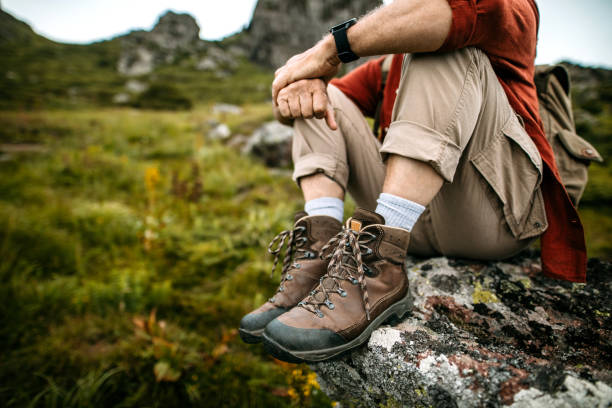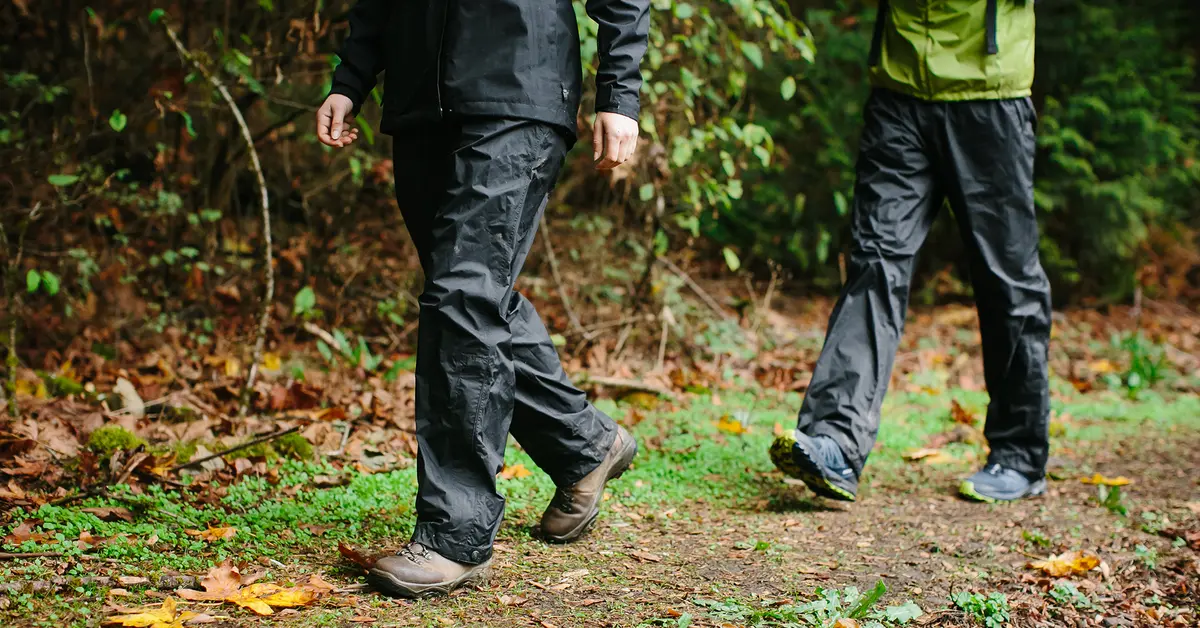Lifestyle
Beyond trails: The evolution of travel-ready Hiking Boot and Waterproof Pants

Since their nascent days as basic rubberized clothing, waterproof pants have come a long way. Modern Waterproof pants are completely new in terms of utility and design, thanks to technological breakthroughs. Along with enhancing comfort, breathability, and durability, these advances have also considerably increased their ability to keep us dry.
Travel-focused hiking boots
For adventure seekers and world travelers looking for the optimum balance of usability, sturdiness, and design, travel-focused hiking boots are the ideal travel companions. These specialist boots are expertly created to accommodate various travel-related terrains and climates while also offering great comfort and support throughout lengthy excursions. Travel-oriented hiking boots are made of durable, lightweight materials that provide exceptional traction and stability, giving you a firm footing on rocky routes, uneven roads, and even in damp weather.
Their adaptability is further increased by characteristics like moisture-wicking linings that keep feet dry, cushioning midsoles that absorb shocks, and protective toe caps that guard against unforeseen obstructions. Travel-focused hiking boots are a dependable option for adventurers who won’t settle for anything less than comfort and performance, no matter where their wanderlust takes them.
Innovations in Waterproofing Technology: Revolutionizing Waterproof Pants
Breathable membranes:
The lack of permeability of traditional waterproof pants frequently resulted in discomfort from heat and moisture that was trapped inside. A significant turning point was the development of breathable membranes like Gore-Tex and eVent. These membranes have small openings that let water vapor escape but keep liquid water from getting in. With the help of this technology, perspiration can easily escape while the wearer remains dry from the elements, improving overall comfort while engaging in physical activity.
Nanotechnology and DWR treatments:
In order to increase the water resistance of fabrics, durable water repellent (DWR) treatments have been utilized for a long time. Superhydrophobic coatings, however, have been created as a result of recent advances in nanotechnology. Water beads up and rolls off the fabric’s surface as a result of the tiny roughness that these coatings produce. This prolongs the lifespan of the pants and enhances waterproofing while also preventing oil and grime from sticking to the cloth.
2.5-Layer and 3-Layer construction:
The performance and durability of waterproof pants have been improved by manufacturers through the introduction of novel layering techniques. Combining a waterproof and breathable membrane with protective layers results in 2.5-layer and 3-layer designs. With this strategy, comfort, durability, and weight are all balanced. Abrasion resistance is provided by the outer layer, and moisture and grease are kept out of the membrane by the inner layer. For high-performance waterproof pants, this fabrication technique has become standard.
Stretchable and flexible fabrics:
The inflexibility of early waterproof pants, which limited movement during strenuous activity, was a frequent criticism of them. Stretchable and flexible textiles are a result of recent advancements in fabric technology. While maintaining waterproofing, these materials permit a full range of motion. For sports like hiking, climbing, and skiing, where mobility is essential, this development is especially beneficial.
Seam sealing and welding:
Water would once seep through the stitching at the seams of waterproof pants. This problem has been solved, though, by improvements in seam-sealing methods and welding technology. A water-repellent barrier is made up of heat-welded and taped seams. Waterproof pants are now even more reliable than before because of the level of precision used to ensure that every potential entry hole is sealed off.
Sustainable waterproofing:
Sustainable waterproofing solutions are becoming more popular as environmental awareness rises. Waterproof pants are increasingly using recycled fabrics and cutting-edge DWR technologies that are environmentally friendly. To lessen their reliance on petroleum-based materials and reduce the environmental impact of their clothing, brands are looking into plant-based alternatives for waterproof coatings.
Fashion and style of waterproof pants
When waterproof clothing was just associated with usefulness, those days are long gone. To give any outfit a fashionable and modern touch, they have today perfectly integrated with the world of fashion. These days, there are many different styles of waterproof pants, from elegant and simple to vibrant and edgy. Along with ensuring their usefulness, the incorporation of cutting-edge waterproofing technology has made it possible to design fashionable cuts and silhouettes that fit the body well. When worn with the appropriate accessories and footwear, waterproof pants can effortlessly upgrade an outfit, whether it’s for an outdoor excursion or a rainy day in the city. Additionally, trend-setting brands have embraced this look by incorporating stylish features like contrast zippers, textured fabrics, and original designs into these trousers. New waterproof pants have emerged as a result of the merging of fashion and utility, allowing people to express their distinctive style while remaining dry and fashionable no matter the weather.
Waterproof pants have since become high-performance, multifunction apparel that may be utilized in an assortment of situations and activities as an outcome of advancements in hydrophobic science and technology, having been converted from being primarily protection apparel. As a result of the developments in breathability membranes, the field of nanotechnology, sophisticated layering methods, stretchy textiles, seam securing, and environmentally acceptable possibilities, the way we regard protection has transformed. Waterproof pants are a crucial purchase for outdoor lovers and anybody looking for dependable weather protection because of these improvements, which not only keep us dry but also improve comfort, movement, and durability. It’s thrilling to think of future technological developments that will definitely push the waterproofing industry’s boundaries even further.
-
Blog1 year ago
MyCSULB: Login to CSULB Student and Employee Portal – MyCSULB 2023
-
Android App3 years ago
Cqatest App What is It
-
Android1 year ago
What Is content://com.android.browser.home/ All About in 2023? Set Up content com android browser home
-
Software2 years ago
A Guide For Better Cybersecurity & Data Protection For Your Devices
-
Latest News2 years ago
Soap2day Similar Sites And Alternatives To Watch Free Movies
-
Android2 years ago
What is OMACP And How To Remove It? Easy Guide OMACP 2022
-
Android3 years ago
What is org.codeaurora.snapcam?
-
Business2 years ago
Know Your Business (KYB) Process – Critical Component For Partnerships






















